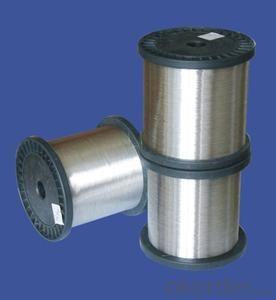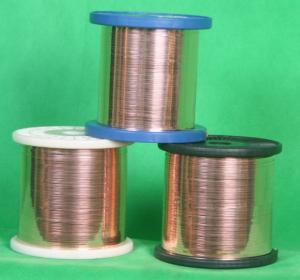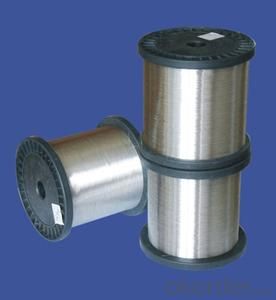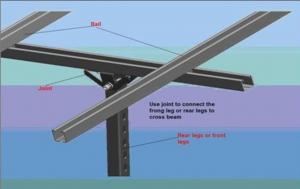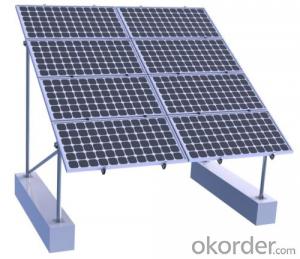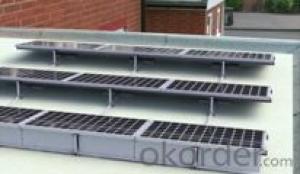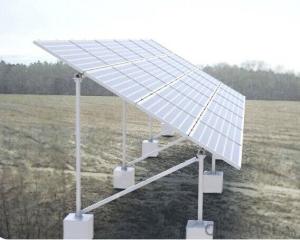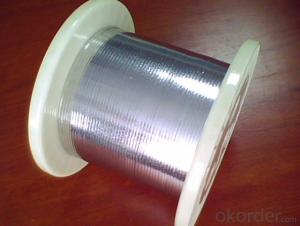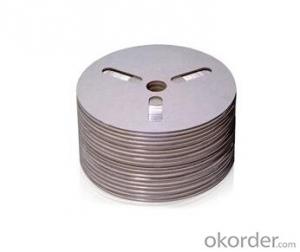Connect-Inter Ribbon-Machine Welding 0.2*1.6mm
- Loading Port:
- China Main Port
- Payment Terms:
- TT or LC
- Min Order Qty:
- -
- Supply Capability:
- -
OKorder Service Pledge
OKorder Financial Service
You Might Also Like
Structure
We produce custom engineered solar tabbing and bus wire helping to attain the highest efficiencies possible for each unique module design. Our Research and Development team can assist you with your needs evaluation and our world-wide manufacturing facilities are strategically located for large volume production.
Feature
The Flux should be compounded and processed in such a manner as to be uniform in quality and
should be free from deleterious material and other details that will after life serviceability or appearance.
Cold Rolling Mills for manufacturing Photovoltaic (PV) Ribbon:
Cold Rolling Mills for manufacturing Photovoltaic Ribbon
This machine is for making Bare flat copper conductors which is using PV Ribbon Wire , Tinned plated flat copper conductors which is using FFC or materials and it was designed to make the best quality products with high productivity as well as easy to control.
Machine capacity
Tinned plated flat copper conductors which is using FFC
Images
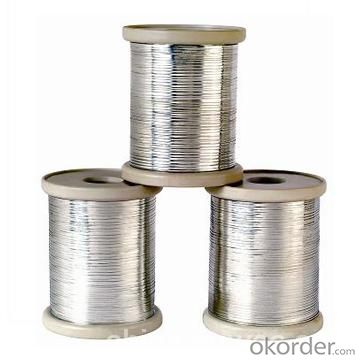
Specifications
Visual Inspection
The visual inspection is using perception to inspect the PV Ribbon Wire. The important
aspect of this inspection is the coated copper must free from:
1).Whether or not there is any flaw is checked.
2).Whether or not its surface has uniform lustrous hue be inspected.
3).Whether or not its surface free from thick.
Coating Thickness Test
The measurement to PV Ribbon Wire is using the external micrometer (0. 001mm)or its equivalents.
The test piece of about 250px long shall be taken and the OD of the wire shall be measured at
3 points.Each point shall be measured 2 times
Thickness Of Solder Coated Wire.After the 3 points of wire be measured,dip the test piece into nitric acid for about 5 minutes,the diameter of core wire shall be measured. One half of the two measurements will give the thickness of solder coated wire.
*Recommended temperature of soldering iron tip : 280~320°C
( According to different thickness, adjust the suitable temperature of soldering )
FAQ
Q:How to guarantee the quality of the products?
A:We have established the international advanced quality management system,every link from raw material to final product we have strict quality test;We resolutely put an end to unqualified products flowing into the market. At the same time, we will provide necessary follow-up service assurance.
Q:Can we visit your factory?
A:Surely, I will arrange the trip basing on your business schedule.
Q:Which payment terms can you accept?
A:T/T,L/C,Moneygram,Paypal are available for us.
- Q: How do solar vacuum tubes perform in areas with high levels of snowfall?
- Solar vacuum tubes may not perform optimally in areas with high levels of snowfall. Snow accumulation on the tubes can block sunlight and reduce their efficiency in converting solar energy into usable heat. Additionally, the weight of heavy snow can put strain on the tubes and potentially cause damage. Therefore, regular snow removal or alternative heating methods may be necessary in such areas to ensure the proper functioning of solar vacuum tubes.
- Q: How does the size of the water tank affect the performance of a solar pump?
- The size of the water tank can have a significant impact on the performance of a solar pump. A larger water tank allows for a greater water storage capacity, which means the pump can operate for longer periods without running out of water. This is particularly beneficial in areas with unreliable or limited water sources. Additionally, a larger water tank helps in maintaining a consistent water pressure. When the tank is smaller, the pump may need to work harder and cycle on and off more frequently to maintain the desired water pressure. This can lead to increased wear and tear on the pump and reduce its overall efficiency. Furthermore, the size of the water tank also affects the rate of water flow. A larger tank can provide a more steady and continuous flow of water, while a smaller tank may result in intermittent or inconsistent water supply. It is important to note that the size of the water tank should be chosen based on the specific needs and requirements of the system. Factors such as the amount of water required, the frequency of water usage, and the availability of sunlight should be taken into consideration when determining the appropriate size of the water tank.
- Q: Can solar chargers be used to charge electric gate openers?
- Yes, solar chargers can be used to charge electric gate openers. Solar chargers are designed to convert sunlight into electricity, which can then be used to power various devices, including electric gate openers. By harnessing the energy from the sun, solar chargers offer a sustainable and eco-friendly solution for charging electric gate openers, eliminating the need for traditional electricity sources.
- Q: Can solar lights be controlled with a remote?
- Yes, solar lights can be controlled with a remote. Many solar lights come with remote control options that allow users to adjust the brightness, switch the lights on or off, and even change the lighting modes from a distance. This feature provides convenience and flexibility in managing outdoor lighting systems powered by solar energy.
- Q: Can a solar controller be used with solar panels that have different wattages?
- Yes, a solar controller can be used with solar panels that have different wattages. The solar controller's main function is to regulate the charging of batteries or the flow of power to the load. It is designed to handle varying wattages and can efficiently manage the charging process regardless of the panel wattage differences.
- Q: How do solar chargers handle temperature variations?
- Solar chargers are designed to handle temperature variations by utilizing advanced technology and materials. They are built with temperature sensors that monitor the ambient temperature and adjust the charging process accordingly. This ensures optimal performance and prevents any damage that extreme temperatures may cause. Additionally, solar chargers often come with protective casings or coatings that provide insulation and shield the internal components from temperature fluctuations.
- Q: How does a solar water heater compare to a traditional electric or gas water heater?
- A solar water heater is more environmentally friendly and energy-efficient compared to a traditional electric or gas water heater. It relies on renewable solar energy to heat water, resulting in lower greenhouse gas emissions and reduced reliance on fossil fuels. Although the initial installation cost may be higher, solar water heaters can save money in the long run due to lower operating costs. However, their effectiveness may vary depending on climate and sunlight availability, whereas electric or gas water heaters can work reliably in all conditions.
- Q: What is the price of monocrystalline silicon
- The content of silicon in the earth's crust is 25.8%, which provides an inexhaustible source for the production of monocrystalline silicon. Because silicon is one of the most abundant elements in the earth, the solar battery that destined to enter the mass market (mass market) products, reserves of advantage is to become one of the reasons the main photovoltaic silicon materials.
- Q: Can a solar pump be used for agricultural applications?
- Solar pumps are a viable option for agricultural purposes. They serve as an excellent alternative to traditional pumps that rely on fossil fuel-powered engines or electricity from the grid. Specifically, they are highly suitable for agricultural use in areas with ample sunlight and limited access to electricity. Various agricultural applications can benefit from solar pumps, including irrigation, livestock watering, and crop spraying water supply. These pumps offer remarkable efficiency, cost-effectiveness, and environmental friendliness. By harnessing solar energy, they eliminate the need for expensive fuel or electricity, consequently reducing operational costs for farmers. Moreover, solar pumps provide a consistent and dependable water supply, ensuring adequate irrigation for crops even in remote or off-grid locations. Their installation is simple, maintenance requirements are minimal, and their lifespan is long, making them a practical solution for agricultural needs. In addition to these advantages, solar pumps contribute to sustainable farming practices by diminishing carbon emissions and reducing reliance on non-renewable energy sources. Farmers can also benefit from government incentives and subsidies that are often available for adopting solar-powered equipment. To summarize, a solar pump is an exceptional choice for agricultural applications due to its efficiency, cost-effectiveness, reliability, and environmental benefits. It encourages sustainable farming practices and offers a feasible solution for farmers facing limited access to electricity or high fuel costs.
- Q: How do solar vacuum tubes compare to geothermal heat pumps?
- Solar vacuum tubes and geothermal heat pumps are both renewable energy technologies that can provide heating and cooling for residential or commercial buildings. However, they differ in terms of their energy sources and the way they operate. Solar vacuum tubes rely on direct sunlight to generate heat, whereas geothermal heat pumps extract heat from the ground or water sources. In terms of efficiency, solar vacuum tubes are more effective in warmer climates with ample sunlight, as they directly convert solar energy into heat. Geothermal heat pumps, on the other hand, can operate efficiently regardless of the weather conditions, as the ground or water sources they utilize offer a stable temperature year-round. Cost-wise, solar vacuum tubes tend to have lower installation and maintenance costs compared to geothermal heat pumps. Geothermal systems require more complex installation procedures, including drilling wells or installing underground loops, which can increase the initial expenses. In summary, solar vacuum tubes are a suitable option for regions with abundant sunlight, while geothermal heat pumps offer a more consistent heating and cooling solution in varying climates. The choice between the two depends on factors such as location, climate, and individual preferences or requirements.
Send your message to us
Connect-Inter Ribbon-Machine Welding 0.2*1.6mm
- Loading Port:
- China Main Port
- Payment Terms:
- TT or LC
- Min Order Qty:
- -
- Supply Capability:
- -
OKorder Service Pledge
OKorder Financial Service
Similar products
Hot products
Hot Searches
Related keywords
